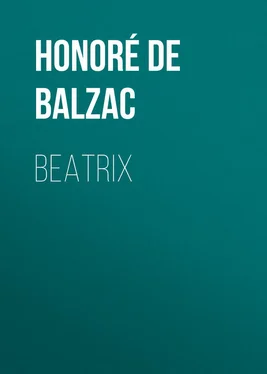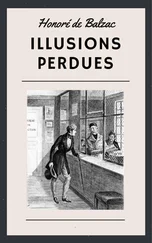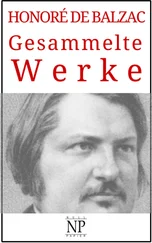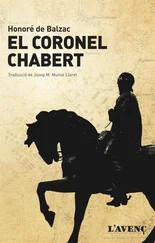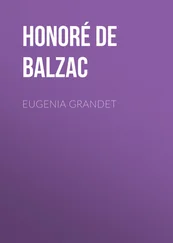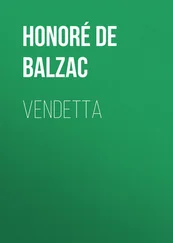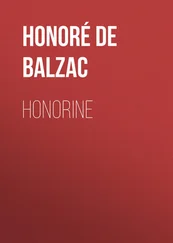Honoré Balzac - Beatrix
Здесь есть возможность читать онлайн «Honoré Balzac - Beatrix» — ознакомительный отрывок электронной книги совершенно бесплатно, а после прочтения отрывка купить полную версию. В некоторых случаях можно слушать аудио, скачать через торрент в формате fb2 и присутствует краткое содержание. Жанр: literature_19, foreign_antique, foreign_prose, на английском языке. Описание произведения, (предисловие) а так же отзывы посетителей доступны на портале библиотеки ЛибКат.
- Название:Beatrix
- Автор:
- Жанр:
- Год:неизвестен
- ISBN:нет данных
- Рейтинг книги:5 / 5. Голосов: 1
-
Избранное:Добавить в избранное
- Отзывы:
-
Ваша оценка:
- 100
- 1
- 2
- 3
- 4
- 5
Beatrix: краткое содержание, описание и аннотация
Предлагаем к чтению аннотацию, описание, краткое содержание или предисловие (зависит от того, что написал сам автор книги «Beatrix»). Если вы не нашли необходимую информацию о книге — напишите в комментариях, мы постараемся отыскать её.
Beatrix — читать онлайн ознакомительный отрывок
Ниже представлен текст книги, разбитый по страницам. Система сохранения места последней прочитанной страницы, позволяет с удобством читать онлайн бесплатно книгу «Beatrix», без необходимости каждый раз заново искать на чём Вы остановились. Поставьте закладку, и сможете в любой момент перейти на страницу, на которой закончили чтение.
Интервал:
Закладка:
Honoré de Balzac
Beatrix
It is somewhat remarkable that Balzac, dealing as he did with traits of character and the minute and daily circumstances of life, has never been accused of representing actual persons in the two or three thousand portraits which he painted of human nature. In “The Great Man of the Provinces in Paris” some likenesses were imagined: Jules Janin in Etienne Lousteau, Armand Carrel in Michel Chrestien, and, possibly, Berryer in Daniel d’Arthez. But in the present volume, “Beatrix,” he used the characteristics of certain persons, which were recognized and admitted at the time of publication. Mademoiselle des Touches (Camille Maupin) is George
Sand in character, and the personal description of her, though applied by some to the famous Mademoiselle Georges, is easily recognized from Couture’s drawing. Beatrix, Conti, and Claude Vignon are sketches of the Comtesse d’Agoult, Liszt, and the well-known critic Gustave Planche.
The opening scene of this volume, representing the manners and customs of the old Breton family, a social state existing no longer except in history, and the transition period of the vieille roche as it passed into the customs and ideas of the present century, is one of Balzac’s remarkable and most famous pictures in the “Comedy of Human Life.”
K.P.W.
I. A BRETON TOWN AND MANSION
France, especially in Brittany, still possesses certain towns completely outside of the movement which gives to the nineteenth century its peculiar characteristics. For lack of quick and regular communication with Paris, scarcely connected by wretched roads with the sub-prefecture, or the chief city of their own province, these towns regard the new civilization as a spectacle to be gazed at; it amazes them, but they never applaud it; and, whether they fear or scoff at it, they continue faithful to the old manners and customs which have come down to them. Whoso would travel as a moral archaeologist, observing men instead of stones, would find images of the time of Louis XV. in many a village of Provence, of the time of Louis XIV. in the depths of Pitou, and of still more ancient times in the towns of Brittany. Most of these towns have fallen from states of splendor never mentioned by historians, who are always more concerned with facts and dates than with the truer history of manners and customs. The tradition of this splendor still lives in the memory of the people, – as in Brittany, where the native character allows no forgetfulness of things which concern its own land. Many of these towns were once the capitals of a little feudal State, – a county or duchy conquered by the crown or divided among many heirs, if the male line failed. Disinherited from active life, these heads became arms; and arms deprived of nourishment, wither and barely vegetate.
For the last thirty years, however, these pictures of ancient times are beginning to fade and disappear. Modern industry, working for the masses, goes on destroying the creations of ancient art, the works of which were once as personal to the consumer as to the artisan. Nowadays we have products , we no longer have works . Public buildings, monuments of the past, count for much in the phenomena of retrospection; but the monuments of modern industry are freestone quarries, saltpetre mines, cotton factories. A few more years and even these old cities will be transformed and seen no more except in the pages of this iconography.
One of the towns in which may be found the most correct likeness of the feudal ages is Guerande. The name alone awakens a thousand memories in the minds of painters, artists, thinkers who have visited the slopes on which this splendid jewel of feudality lies proudly posed to command the flux and reflux of the tides and the dunes, – the summit, as it were, of a triangle, at the corners of which are two other jewels not less curious: Croisic, and the village of Batz. There are no towns after Guerande except Vitre in the centre of Brittany, and Avignon in the south of France, which preserve so intact, to the very middle of our epoch, the type and form of the middle ages.
Guerande is still encircled with its doughty walls, its moats are full of water, its battlements entire, its loopholes unencumbered with vegetation; even ivy has never cast its mantle over the towers, square or round. The town has three gates, where may be seen the rings of the portcullises; it is entered by a drawbridge of iron-clamped wood, no longer raised but which could be raised at will. The mayoralty was blamed for having, in 1820, planted poplars along the banks of the moat to shade the promenade. It excused itself on the ground that the long and beautiful esplanade of the fortifications facing the dunes had been converted one hundred years earlier into a mall where the inhabitants took their pleasure beneath the elms.
The houses of the old town have suffered no change; and they have neither increased nor diminished. None have suffered upon their frontage from the hammer of the architect, the brush of the plasterer, nor have they staggered under the weight of added stories. All retain their primitive characteristics. Some rest on wooden columns which form arcades under which foot-passengers circulate, the floor planks bending beneath them, but never breaking. The houses of the merchants are small and low; their fronts are veneered with slate. Wood, now decaying, counts for much in the carved material of the window-casings and the pillars, above which grotesque faces look down, while shapes of fantastic beasts climb up the angles, animated by that great thought of Art, which in those old days gave life to inanimate nature. These relics, resisting change, present to the eye of painters those dusky tones and half-blurred features in which the artistic brush delights.
The streets are what they were four hundred years ago, – with one exception; population no longer swarms there; the social movement is now so dead that a traveller wishing to examine the town (as beautiful as a suit of antique armor) may walk alone, not without sadness, through a deserted street, where the mullioned windows are plastered up to avoid the window-tax. This street ends at a postern, flanked with a wall of masonry, beyond which rises a bouquet of trees planted by the hands of Breton nature, one of the most luxuriant and fertile vegetations in France. A painter, a poet would sit there silently, to taste the quietude which reigns beneath the well-preserved arch of the postern, where no voice comes from the life of the peaceful city, and where the landscape is seen in its rich magnificence through the loop-holes of the casemates once occupied by halberdiers and archers, which are not unlike the sashes of some belvedere arranged for a point of view.
It is impossible to walk about the place without thinking at every step of the habits and usages of long-past times; the very stones tell of them; the ideas of the middle ages are still there with all their ancient superstitions. If, by chance, a gendarme passes you, with his silver-laced hat, his presence is an anachronism against which your sense of fitness protests; but nothing is so rare as to meet a being or an object of the present time. There is even very little of the clothing of the day; and that little the inhabitants adapt in a way to their immutable customs, their unchangeable physiognomies. The public square is filled with Breton costumes, which artists flock to draw; these stand out in wonderful relief upon the scene around them. The whiteness of the linen worn by the paludiers (the name given to men who gather salt in the salt-marshes) contrasts vigorously with the blues and browns of the peasantry and the original and sacredly preserved jewelry of the women. These two classes, and that of the sailors in their jerkins and varnished leather caps are as distinct from one another as the castes of India, and still recognize the distance that parts them from the bourgeoisie, the nobility, and the clergy. All lines are clearly marked; there the revolutionary level found the masses too rugged and too hard to plane; its instrument would have been notched, if not broken. The character of immutability which science gives to zoological species is found in Breton human nature. Even now, after the Revolution of 1830, Guerande is still a town apart, essentially Breton, fervently Catholic, silent, self-contained, – a place where modern ideas have little access.
Читать дальшеИнтервал:
Закладка:
Похожие книги на «Beatrix»
Представляем Вашему вниманию похожие книги на «Beatrix» списком для выбора. Мы отобрали схожую по названию и смыслу литературу в надежде предоставить читателям больше вариантов отыскать новые, интересные, ещё непрочитанные произведения.
Обсуждение, отзывы о книге «Beatrix» и просто собственные мнения читателей. Оставьте ваши комментарии, напишите, что Вы думаете о произведении, его смысле или главных героях. Укажите что конкретно понравилось, а что нет, и почему Вы так считаете.
